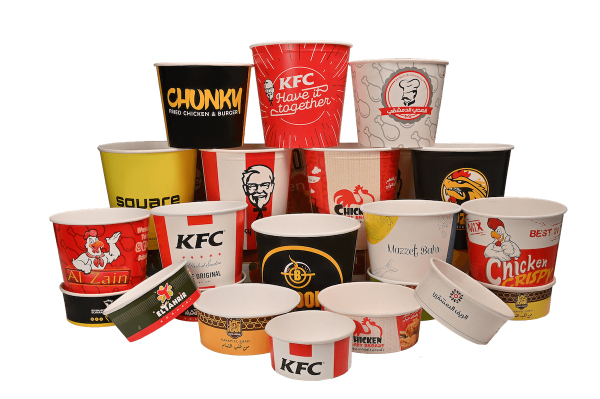In today’s world, the importance of food safe ink testing methods cannot be overstated. Ensuring that the inks used in food packaging are safe is crucial for protecting consumer health and maintaining brand integrity. With the rise in consumer awareness and regulatory scrutiny, understanding how to test these inks has become a priority for many companies, especially those involved in food packaging.

The Importance of Food Safe Inks
Food safe inks are specially formulated to prevent harmful chemicals from migrating into food products. This is vital because the packaging often comes into direct contact with food items. Any ink migration could lead to contamination, posing health risks to consumers and potentially leading to costly recalls for manufacturers.
Regulatory Standards and Compliance
There are various regulatory standards that govern the use of inks in food packaging. Organizations like the FDA and EU have stringent guidelines to ensure consumer safety. These regulations dictate the types of materials that can be used in inks and the acceptable levels of chemical migration.
Common Testing Methods
Testing the safety of inks used in food packaging involves several methods. Each method is designed to assess different aspects of ink safety, such as chemical composition, migration potential, and durability.
Chemical Composition Analysis
This method involves analyzing the chemical makeup of the ink. It ensures that the ink does not contain any harmful substances that could potentially migrate into food.
Migration Testing
Migration testing is a critical component of food safe ink testing methods. It assesses the potential for chemicals in the ink to transfer to food items. For more detailed techniques on preventing ink migration, you can visit Meyers Blog.
Durability and Resistance Testing
Durability tests evaluate how well the ink withstands various conditions such as moisture, temperature, and friction. This is essential for ensuring that the ink remains intact and does not break down over time, potentially leading to migration.
Advanced Testing Techniques
As technology advances, so do the techniques for testing food safe inks. These advanced methods offer more detailed insights and higher accuracy in ensuring ink safety.
Spectroscopic Analysis
Spectroscopy is used to identify the presence of specific chemicals in inks. By measuring the wavelengths of light absorbed by the ink, researchers can pinpoint potentially harmful substances.
Chromatography Methods
Chromatography separates ink components to analyze their individual properties. This method is particularly useful for identifying and quantifying minute amounts of chemicals that may not be apparent through other testing methods.
Importance of Ongoing Research
Continuous research is vital in the field of food safe inks. As new materials are developed and production methods evolve, staying updated with the latest research ensures that the inks used remain safe and effective.
Industry Collaborations
Collaboration between ink manufacturers, food packaging companies, and regulatory bodies is essential. By working together, these entities can share knowledge and resources to enhance ink safety.
Consumer Education
Educating consumers about the importance of food safe inks helps build trust and transparency. When consumers are informed, they can make better choices and advocate for safer packaging standards.
Future Trends in Food Safe Ink Testing
The future of food safe ink testing is promising, with ongoing advancements aimed at improving testing accuracy and efficiency.
Automated Testing Systems
Automation in testing can reduce human error and increase testing throughput. Automated systems can quickly analyze large batches of inks, providing reliable results in less time.
Integration of AI and Machine Learning
Artificial Intelligence and machine learning are being integrated into testing processes to predict potential issues before they arise. These technologies can analyze data patterns to identify inks that may pose risks, allowing for proactive measures to be taken.
Practical Applications
The practical applications of food safe ink testing are vast, impacting various aspects of the food packaging industry.
Ensuring Brand Integrity
Brands that prioritize ink safety demonstrate a commitment to consumer health, enhancing their reputation and building consumer trust.
Reducing Liability Risks
By ensuring that inks are safe, companies can significantly reduce the risk of legal action due to contamination issues.
Conclusion
In conclusion, understanding and implementing food safe ink testing methods is crucial for businesses in the food packaging industry. By ensuring that inks meet safety standards, companies can protect consumers, maintain brand integrity, and comply with regulatory requirements. As technology and research continue to evolve, the future of food safe inks looks brighter than ever.

FAQs
What are food safe inks?
Food safe inks are specially formulated inks that prevent harmful chemicals from migrating into food products.
Why is ink migration a concern?
Ink migration can lead to food contamination, posing health risks to consumers and potential legal issues for manufacturers.
How can companies ensure ink safety?
Companies can ensure ink safety by implementing rigorous testing methods and staying updated with regulatory standards. For more insights on inks used in food packaging, you can visit BPA-free Packaging Inks.
This article contains affiliate links. We may earn a commission at no extra cost to you.






